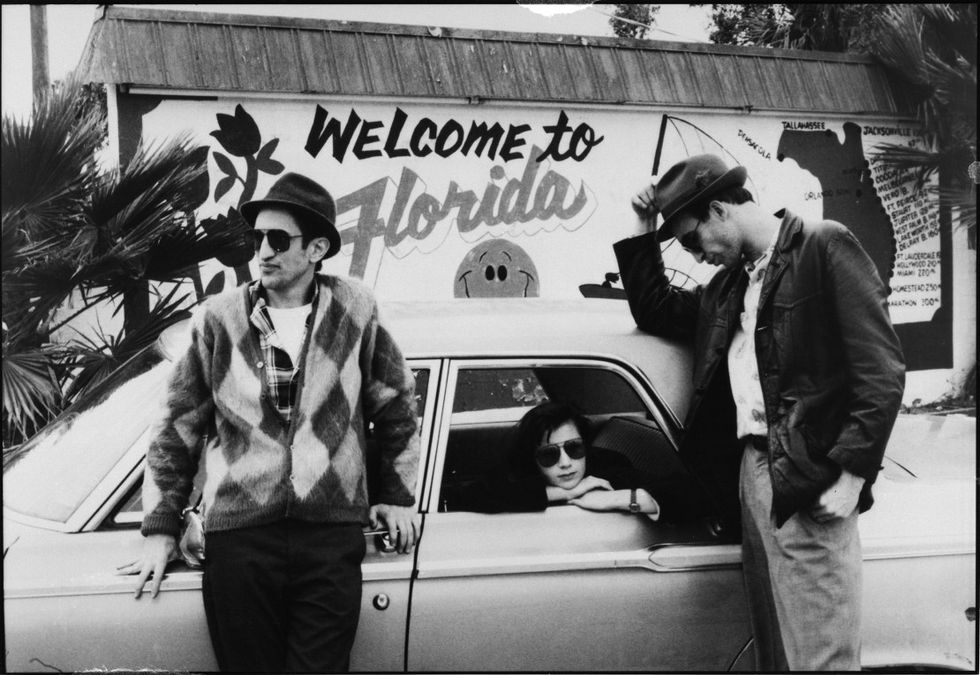Screenplay Tone is the Most Elusive Writing Element
Here are some specific ways to think about your screenplay's tone.

In a screenplay, tone is the most elusive element. It doesn’t necessarily have a physical form on the page, but emerges from between the lines as a conglomeration of dialogue, structure, character, and narrative development. It manifests as a feeling rather than a tangible entity. For these reasons, tone often escapes even the best writers. But when a script has a precise and compelling tone, it raises the final cut of the film considerably.
When you're in the early processes of drafting your script—either outlining or simply thinking of ideas—it’s important to understand how form enables tone (and vice versa). Tone is a byproduct of your screenplay's structure; the way your script will feel to your reader is a result of how you choose to dole out information. An easy example of this is Moonlight. The chapter structure coupled with the distinct choice to withhold information by exiting scenes earlier than expected adds to the free-flowing, "memory-like" tone of the film. (Of course, this tone is later enhanced by the sweeping cinematography and music.)
Write a draft that’s completely dedicated to tone. Throw out any plot or logic rules that you’ve been taught along the way.
Think about the early stages of your script like a marionette with a lot of strings attached to one body—your story. When you tweak one string, like structure, it impacts every other element of your story, tone included. If your structure is unique and well-planned, then your character will develop in an interesting way, will result in an effective feeling of tone throughout your story.
Below are the basic screenplay elements that you can manipulate in order to create an effective—and affecting—tone.

Defining character moments
Common writing wisdom says to start as early as possible—to "jump in" to get the ball rolling. That’s all well and good to do, but it can often result in a stale first 10 pages; you will inevitably get overwhelmed with plot. To offset this, throw in a defining character moment as soon as possible. This is one way that Jim Jarmusch distinguishes his screenplays: especially in his earlier works, like Stranger Than Paradise or Down By Law, Jarmusch puts his characters in a unique situation right off the bat. By bringing all the screenplay elements to work together immediately, the audience understands the film's tone.
Dialogue
Language is a very powerful device when it comes to conveying tone. Jarmusch, for example, made his mark by creating off-kilter worlds that have a specific (and often eccentric) feel. The Coen brothers' films take place in a grounded contemporary reality; the way their characters speak, with a specific diction and syntax, gives the reader or viewer a clear sense of what’s to expect tonally.
But don’t overextend yourself. Simply starting off your script with a solid scene in which each character has a specific voice and the dialogue speaks to the world you’re attempting to illustrate can do wonders for the overarching tone of your script.
Details, details, details
Details are always important in your script, but even more imperative when establishing tone. You should have character-based details that repeat throughout your script; idiosyncrasies, blocking, and even props add to the feeling and poetic nature of your story. You should spend the entirety of your screenplay slowly incorporating these small details into the larger context of the film.
Scene descriptions
Scene descriptions are a great foundation for tone. Use descriptive language in your action lines, as this is where the world-building begins. There's nothing blander than reading description sections that are play-by-play instructions. Add some flavor!
The "tone pass"
After you’re a few drafts in and your structure and character development are solid, write a draft that’s completely dedicated to tone. Throw out any plot or logic rules that you’ve been taught along the way—rules that weigh you down—and just focus on tone. Your main question to yourself should be: How do you want your audience to feel? Write in visuals and don't be afraid to take risks. This will add entirely new dimensions to your script. As amazing as a tight plot or wacky structure can be, you want your audience to have an emotional experience. Creating a comprehensive tone that stays with your audience is the best place to start.

 "'Back Home"via Mercedes Arutro
"'Back Home"via Mercedes Arutro 'Back Home'via Mercedes Arutro
'Back Home'via Mercedes Arutro 









